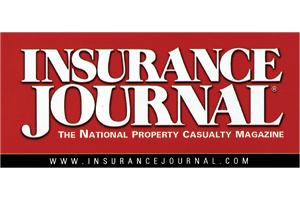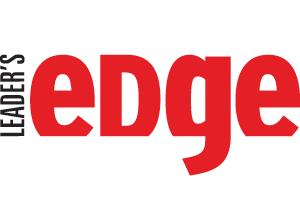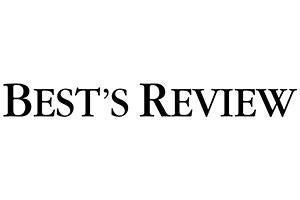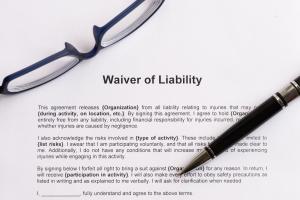Serving small specialty: The role of a service center

As published in Insurance Journal
There was a time not long ago when most small businesses were well protected by standard lines coverages such as business owners policies, workers’ compensation and auto. Those days are gone.
The continuing evolution of small businesses, especially in a post-pandemic environment, means coverage requirements are evolving, too. The increased need for specialized coverage options such as cyber, employment practices, errors and omissions, and more, is resulting in a new and fast-growing market segment – small specialty.
Beyond standard lines
This new segment and the expanding service expectations of customers are creating a service challenge for independent agents – and an opportunity for carriers to provide efficient and effective solutions for their agent partners by expanding their servicing capabilities.
Unfortunately, while carriers have been long adept at servicing BOP-focused small commercial business and standard lines in service centers, they largely have been unable to service the small specialty market. This forces agents to do one of two things – either split the servicing of their small business accounts, placing standard lines business in a service center and retaining servicing responsibilities for small specialty policies, or service the full account on their own.
Generally speaking, neither is an ideal solution for agents. After all, agencies work with service centers to increase efficiency, broaden their service capabilities and reduce expenses. But are agents truly getting the full benefit if only half of an account is managed in a service center? Often, the answer is no. With the shift to a more account-focused approach to insurance, service centers must be equipped to manage more complex policies for small businesses in a holistic way.
Specialized service
Small businesses with specialty exposures can be better served when carriers take an innovative and collaborative approach, rethink their models to best serve agents and expand their servicing capabilities to address this new market. Customers don’t think of their small business risks in the traditional silos of small commercial and specialty – they want end-to-end insurance solutions and servicing.
Small commercial service centers that service both standard and specialty lines offer many benefits to agents, helping to provide an all-in-one experience for their customers, while improving their economics and saving valuable staff time.
Plus, with a broader view of small business customers and their evolving needs, service centers are well-positioned to identify gaps in coverage. In this respect, service centers can offer significant value – and a competitive advantage.
The right partner
It is important to note not all services centers are staffed by licensed insurance professionals, and this is an important consideration to make as businesses’ risks continue to evolve. A service center whose staff has a deeper understanding of the risk landscape is one that can help round out accounts and recommend important coverage enhancements – all of which also benefits agents.
That’s why working with a service center that can offer this higher level of expertise can make all the difference. Carriers like The Hanover can effectively service all of lines of risk for small businesses, providing exceptional service to customers and generating agent growth.
About the author
Erin Fenlon is The Hanover’s vice president, small commercial operations. With more than 25 years of property and casualty experience, she is a proven leader with expertise in the transformation of operating models, technology and processes, resulting in successful profitable growth and modernization of the user experience.
Serving small specialty: The role of a service center
As published in Insurance Journal
There was a time not long ago when most small businesses were well protected by standard lines coverages such as business owners policies, workers’ compensation and auto. Those days are gone.
The continuing evolution of small businesses, especially in a post-pandemic environment, means coverage requirements are evolving, too. The increased need for specialized coverage options such as cyber, employment practices, errors and omissions, and more, is resulting in a new and fast-growing market segment – small specialty.
Beyond standard lines
This new segment and the expanding service expectations of customers are creating a service challenge for independent agents – and an opportunity for carriers to provide efficient and effective solutions for their agent partners by expanding their servicing capabilities.
Unfortunately, while carriers have been long adept at servicing BOP-focused small commercial business and standard lines in service centers, they largely have been unable to service the small specialty market. This forces agents to do one of two things – either split the servicing of their small business accounts, placing standard lines business in a service center and retaining servicing responsibilities for small specialty policies, or service the full account on their own.
Generally speaking, neither is an ideal solution for agents. After all, agencies work with service centers to increase efficiency, broaden their service capabilities and reduce expenses. But are agents truly getting the full benefit if only half of an account is managed in a service center? Often, the answer is no. With the shift to a more account-focused approach to insurance, service centers must be equipped to manage more complex policies for small businesses in a holistic way.
Specialized service
Small businesses with specialty exposures can be better served when carriers take an innovative and collaborative approach, rethink their models to best serve agents and expand their servicing capabilities to address this new market. Customers don’t think of their small business risks in the traditional silos of small commercial and specialty – they want end-to-end insurance solutions and servicing.
Small commercial service centers that service both standard and specialty lines offer many benefits to agents, helping to provide an all-in-one experience for their customers, while improving their economics and saving valuable staff time.
Plus, with a broader view of small business customers and their evolving needs, service centers are well-positioned to identify gaps in coverage. In this respect, service centers can offer significant value – and a competitive advantage.
The right partner
It is important to note not all services centers are staffed by licensed insurance professionals, and this is an important consideration to make as businesses’ risks continue to evolve. A service center whose staff has a deeper understanding of the risk landscape is one that can help round out accounts and recommend important coverage enhancements – all of which also benefits agents.
That’s why working with a service center that can offer this higher level of expertise can make all the difference. Carriers like The Hanover can effectively service all of lines of risk for small businesses, providing exceptional service to customers and generating agent growth.
About the author
Erin Fenlon is The Hanover’s vice president, small commercial operations. With more than 25 years of property and casualty experience, she is a proven leader with expertise in the transformation of operating models, technology and processes, resulting in successful profitable growth and modernization of the user experience.
Serving small specialty: The role of a service center
As published in Insurance Journal
There was a time not long ago when most small businesses were well protected by standard lines coverages such as business owners policies, workers’ compensation and auto. Those days are gone.
The continuing evolution of small businesses, especially in a post-pandemic environment, means coverage requirements are evolving, too. The increased need for specialized coverage options such as cyber, employment practices, errors and omissions, and more, is resulting in a new and fast-growing market segment – small specialty.
Beyond standard lines
This new segment and the expanding service expectations of customers are creating a service challenge for independent agents – and an opportunity for carriers to provide efficient and effective solutions for their agent partners by expanding their servicing capabilities.
Unfortunately, while carriers have been long adept at servicing BOP-focused small commercial business and standard lines in service centers, they largely have been unable to service the small specialty market. This forces agents to do one of two things – either split the servicing of their small business accounts, placing standard lines business in a service center and retaining servicing responsibilities for small specialty policies, or service the full account on their own.
Generally speaking, neither is an ideal solution for agents. After all, agencies work with service centers to increase efficiency, broaden their service capabilities and reduce expenses. But are agents truly getting the full benefit if only half of an account is managed in a service center? Often, the answer is no. With the shift to a more account-focused approach to insurance, service centers must be equipped to manage more complex policies for small businesses in a holistic way.
Specialized service
Small businesses with specialty exposures can be better served when carriers take an innovative and collaborative approach, rethink their models to best serve agents and expand their servicing capabilities to address this new market. Customers don’t think of their small business risks in the traditional silos of small commercial and specialty – they want end-to-end insurance solutions and servicing.
Small commercial service centers that service both standard and specialty lines offer many benefits to agents, helping to provide an all-in-one experience for their customers, while improving their economics and saving valuable staff time.
Plus, with a broader view of small business customers and their evolving needs, service centers are well-positioned to identify gaps in coverage. In this respect, service centers can offer significant value – and a competitive advantage.
The right partner
It is important to note not all services centers are staffed by licensed insurance professionals, and this is an important consideration to make as businesses’ risks continue to evolve. A service center whose staff has a deeper understanding of the risk landscape is one that can help round out accounts and recommend important coverage enhancements – all of which also benefits agents.
That’s why working with a service center that can offer this higher level of expertise can make all the difference. Carriers like The Hanover can effectively service all of lines of risk for small businesses, providing exceptional service to customers and generating agent growth.
About the author
Erin Fenlon is The Hanover’s vice president, small commercial operations. With more than 25 years of property and casualty experience, she is a proven leader with expertise in the transformation of operating models, technology and processes, resulting in successful profitable growth and modernization of the user experience.
Serving small specialty: The role of a service center
As published in Insurance Journal
There was a time not long ago when most small businesses were well protected by standard lines coverages such as business owners policies, workers’ compensation and auto. Those days are gone.
The continuing evolution of small businesses, especially in a post-pandemic environment, means coverage requirements are evolving, too. The increased need for specialized coverage options such as cyber, employment practices, errors and omissions, and more, is resulting in a new and fast-growing market segment – small specialty.
Beyond standard lines
This new segment and the expanding service expectations of customers are creating a service challenge for independent agents – and an opportunity for carriers to provide efficient and effective solutions for their agent partners by expanding their servicing capabilities.
Unfortunately, while carriers have been long adept at servicing BOP-focused small commercial business and standard lines in service centers, they largely have been unable to service the small specialty market. This forces agents to do one of two things – either split the servicing of their small business accounts, placing standard lines business in a service center and retaining servicing responsibilities for small specialty policies, or service the full account on their own.
Generally speaking, neither is an ideal solution for agents. After all, agencies work with service centers to increase efficiency, broaden their service capabilities and reduce expenses. But are agents truly getting the full benefit if only half of an account is managed in a service center? Often, the answer is no. With the shift to a more account-focused approach to insurance, service centers must be equipped to manage more complex policies for small businesses in a holistic way.
Specialized service
Small businesses with specialty exposures can be better served when carriers take an innovative and collaborative approach, rethink their models to best serve agents and expand their servicing capabilities to address this new market. Customers don’t think of their small business risks in the traditional silos of small commercial and specialty – they want end-to-end insurance solutions and servicing.
Small commercial service centers that service both standard and specialty lines offer many benefits to agents, helping to provide an all-in-one experience for their customers, while improving their economics and saving valuable staff time.
Plus, with a broader view of small business customers and their evolving needs, service centers are well-positioned to identify gaps in coverage. In this respect, service centers can offer significant value – and a competitive advantage.
The right partner
It is important to note not all services centers are staffed by licensed insurance professionals, and this is an important consideration to make as businesses’ risks continue to evolve. A service center whose staff has a deeper understanding of the risk landscape is one that can help round out accounts and recommend important coverage enhancements – all of which also benefits agents.
That’s why working with a service center that can offer this higher level of expertise can make all the difference. Carriers like The Hanover can effectively service all of lines of risk for small businesses, providing exceptional service to customers and generating agent growth.
About the author
Erin Fenlon is The Hanover’s vice president, small commercial operations. With more than 25 years of property and casualty experience, she is a proven leader with expertise in the transformation of operating models, technology and processes, resulting in successful profitable growth and modernization of the user experience.










